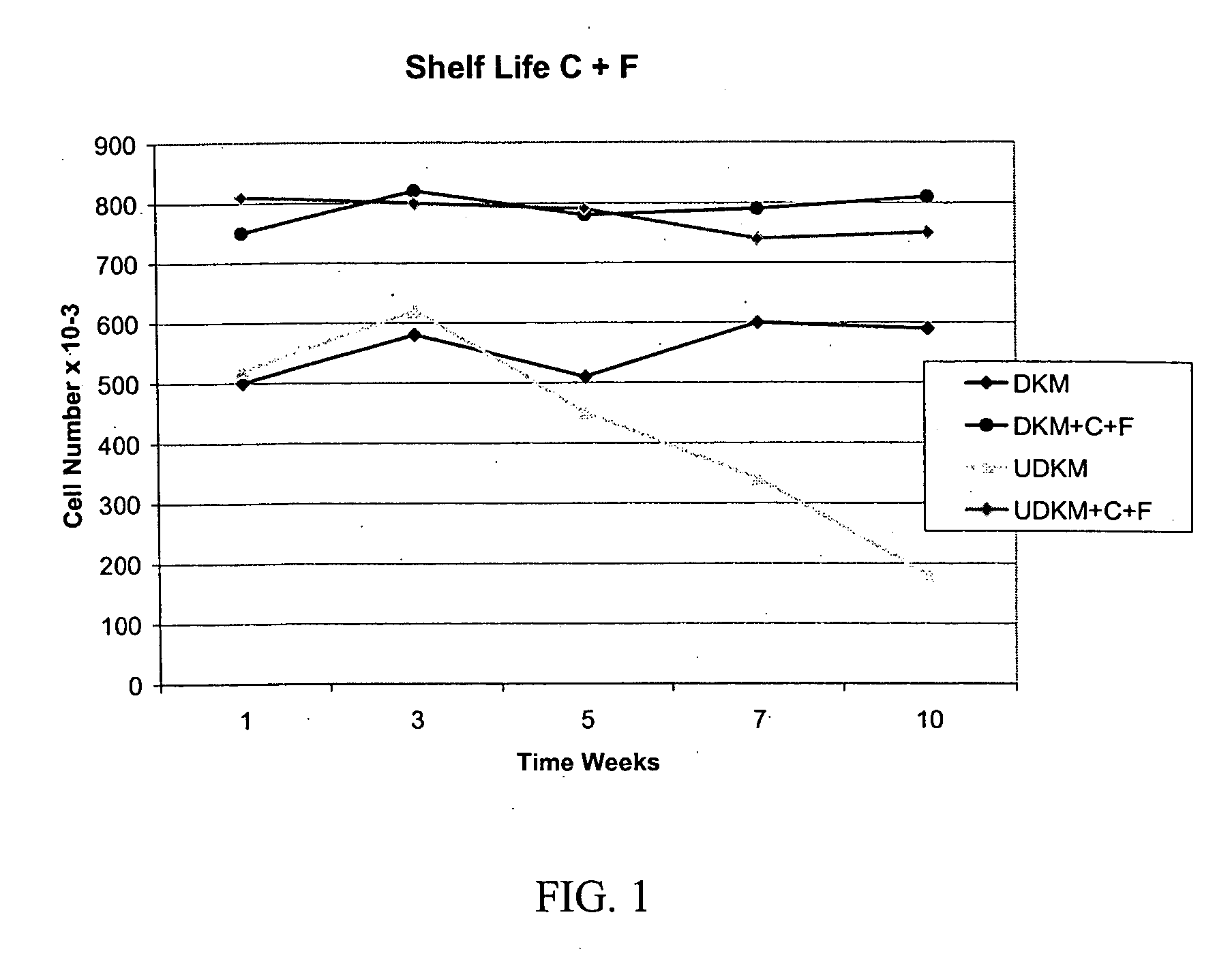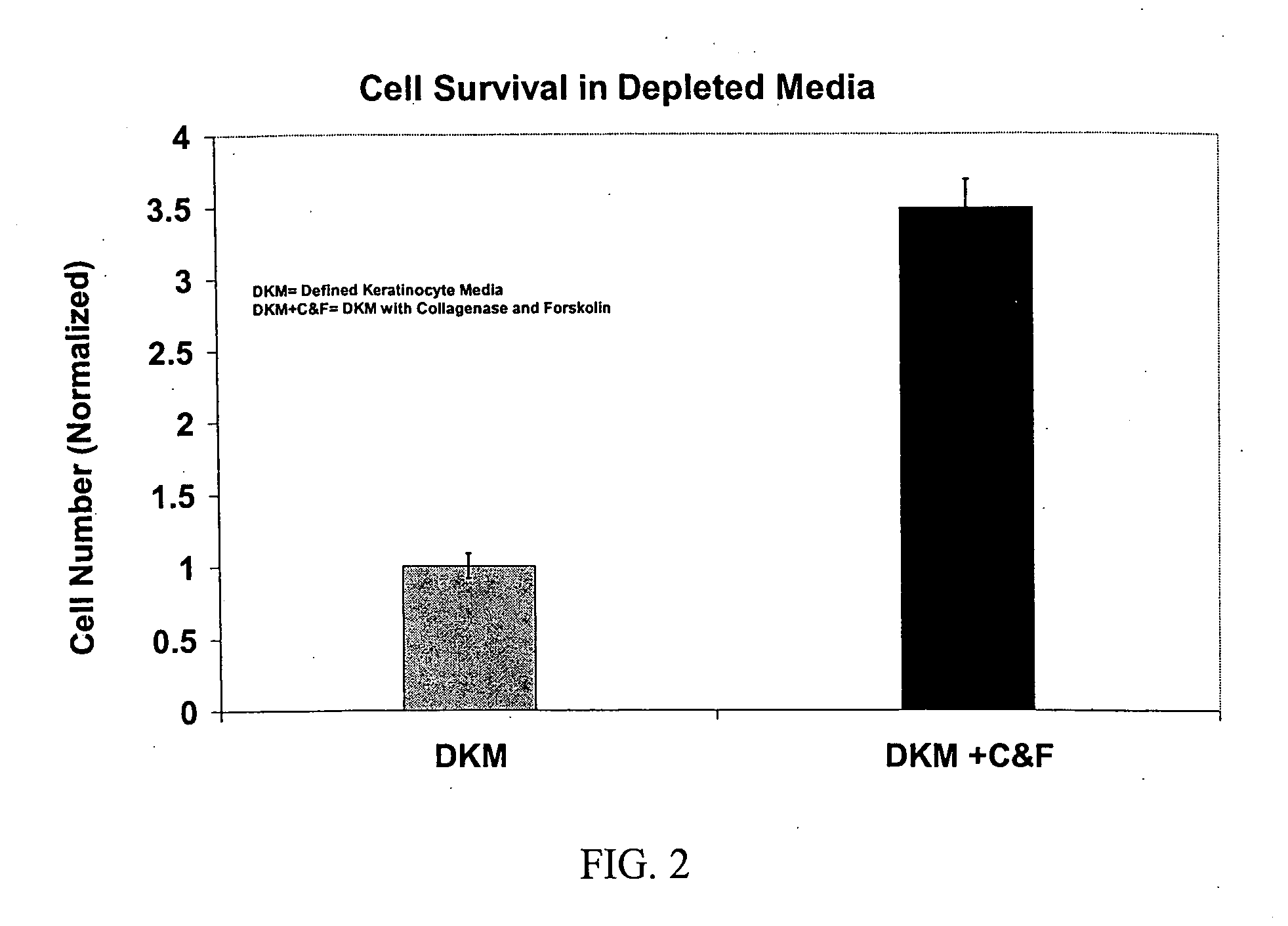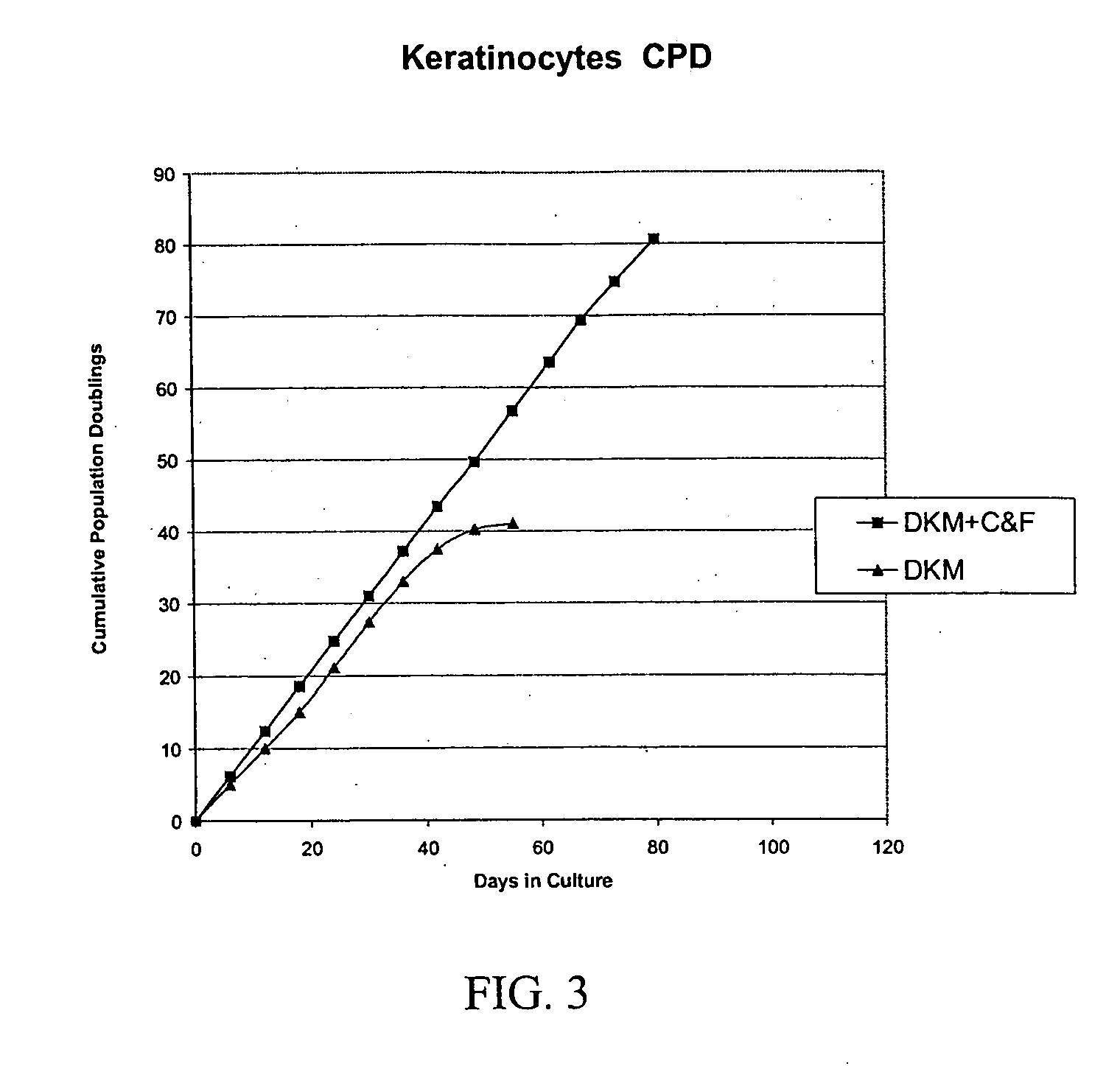Methods and compositions for therapeutics
- Summary
- Abstract
- Description
- Claims
- Application Information
AI Technical Summary
Benefits of technology
Problems solved by technology
Method used
Image
Examples
example 1
Methods
[0337] This Example presents general Materials and Methods generally used in the Examples presented herein.
[0338] Isolation and Culture of Human Keratinocytes
[0339] Media and reagents were obtained from Invitrogen Corp., Sigma, Roche Life Sciences, Serva Electrophoresis, Cascade Biologicals, and Cambrex Bio Sciences. Human neonatal / adult skins, mouse fetal / newborn / adult skin, rat fetal / newborn / adult skin, were placed in serum-free medium (SFM) without growth factors containing 5 μg / ml gentamycin and were stored at 4° C. Skins were briefly rinsed in Dulbecco's phosphate-buffered saline (DPBS), without Ca++ and Mg++, containing 20 μg / ml gentamycin for 60 minutes. Skins were then cut into small pieces and the pieces were transferred, to a petri dish containing 0.15% dispase and 0.5% collagenase, and were incubated 30min-2 hours at 37° C. with gentle mixing to aid in tissue dissociation. Pooling of the tissue specimens was performed to reduce the effects of donor-to-donor grow...
example 2
Formulation of Complete Medium, General Procedure
[0349] Formulation of Basal Cell Culture Medium. Basal Media and reagents were obtained from Invitrogen Corp., Sigma, Roche Life Sciences, Serva Electrophoresis, Cascade Biologicals, Cambrex Bio Sciences. Growth Supplement was added according to manufacturer's instructions including, human insulin, human transferrin, hydrocorisone, EGF, FGF-1, Heparin, Epinephrine. In some cases, additional ingredients included BPE, FBS, BSA, FCS, Lipids, or other animal derived components. A stock solution of forskolin (1 mg / ml) was prepared in 100% Ethanol added to the above to fully supplement the media. A stock solution of collagenase (1 mg / ml) was prepared in DPBS, and added to the above to fully supplement the media. The complete medium was used immediately or stored at 4° C. under diminished light conditions until use.
example 3
Formulation of Complete Keratinocyte Medium
[0350] MCDB 153 was supplemented with the following ingredients: Insulin at a concentration of about 5 μg / ml. Transferrin at 10 μg / ml. Hydrocortisone at 0.1-0.2 μg / ml EGF at 0.2 ng / ml FGF-1 at 5 ng / ml Heparin at 10-15 USP / L Collagenase from Clostridium histolyticum at about 2-3.5 ug / ml OR rhMMP-1 at about 1.5-2 ug / ml Forskolin at about 1.5-2.5 ug / ml. Alternative formulations may include the above factors plus BPE (Bovine Pituitary Extract) at about 10-15 μg / ml
PUM
| Property | Measurement | Unit |
|---|---|---|
| Fraction | aaaaa | aaaaa |
| Fraction | aaaaa | aaaaa |
| Fraction | aaaaa | aaaaa |
Abstract
Description
Claims
Application Information
 Login to View More
Login to View More - R&D
- Intellectual Property
- Life Sciences
- Materials
- Tech Scout
- Unparalleled Data Quality
- Higher Quality Content
- 60% Fewer Hallucinations
Browse by: Latest US Patents, China's latest patents, Technical Efficacy Thesaurus, Application Domain, Technology Topic, Popular Technical Reports.
© 2025 PatSnap. All rights reserved.Legal|Privacy policy|Modern Slavery Act Transparency Statement|Sitemap|About US| Contact US: help@patsnap.com



